Finding out about a Diamond that you may have your eye can seem slightly daunting to start, but its quite straight forward.
First is the shape.
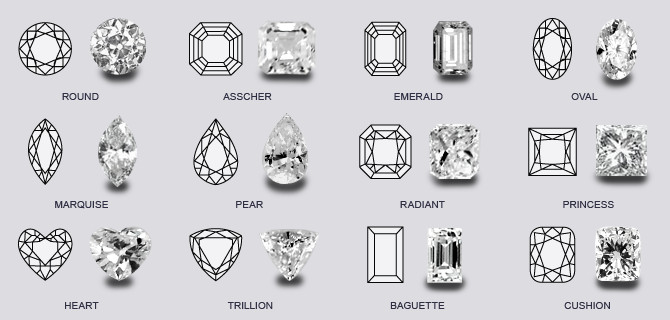
COLOUR
Refers to the degree to which a diamond is colourless.
Diamonds range in colour from icy winter whites to warm summer whites. Diamonds are graded on a colour scale established by the Gemological Institute of America (GIA) which ranges from (colourless) to Z.
Warmer coloured diamonds (K–Z) are particularly desirable when set in yellow gold. Icy winter whites (D–J) look great set in white gold or platinum.
Colour differences are very subtle and it is very difficult to see the difference between, say, an E and an F. Therefore, colours are graded under controlled lighting conditions and are compared to a master set for accuracy.
Truly colourless stones, graded D, treasured for their rarity, are highest on the Diamond Quality Pyramid. Colour, however, ultimately comes down to personal taste. We can show you a variety of colour grades next to one another to help you determine your colour preference.

CARAT Refers to the weight of a diamond.
Carat is often confused with size even though it is actually a measure of weight. One carat is equivalent to 200 milligrammes. One carat can also be divided into 100 “points.” A .75 carat diamond iS the same as a 75-points or a 75 pointer, or a 3/4 carat
A 1-carat diamond costs exactly twice the price of a half-carat diamond, right? Wrong. Since largerdiamonds are found less frequently in nature, which places them at the rarest level of the Diamond
Quality Pyramid, a 1-carat diamond will cost more than twice a 1/2-carat diamond (assuming colour, clarity and cut remain constant).
Cut and mounting can make a diamond appear larger (or smaller) than its actual weight. We can help you to find the right diamond and setting to optimise the beauty of your stone.
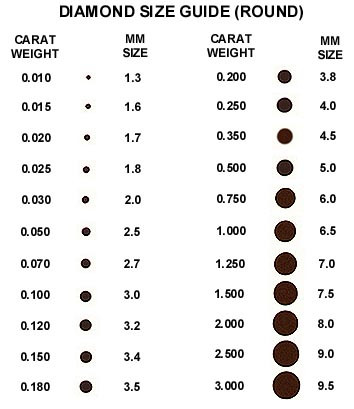
CLARITY
Refers to the presence of any inclusions in a diamond.
Inclusions are natural identifying characteristics such as minerals or fractures, appearing while diamonds are formed in the earth. They may look like tiny crystals, clouds or feathers.
To view inclusions, jewellers use a magnifying loupe. This tool allows jewellers to see a diamond at 10 times its actual size so that inclusions are easier to see. The position of inclusions can affect the value of a diamond. There are very few flawless diamonds found in nature, thus these diamonds are much more valuable.
Inclusions are ranked on a scale of perfection, known as clarity, which was established by the Gemological Institute of America (GIA). The clarity scale, ranging from F (Flawless) to I (Included), is based on the visibility of inclusions at a magnification of 10x. Technical grading chart.
Some inclusions can be hidden by a mounting, thus having little effect on the beauty of a diamond. An inclusion in the middle or top of a diamond could impact the dispersion of light, sometimes making the diamond less brilliant.
The greater a diamond's clarity, the more brilliant, valuable and rare it is—and the higher it is on the Diamond Quality Pyramid.
Flawless
Internal growth lines that show no colour from the front of the stone. Minor natural on girdle. Very small extra facet not visible from front which does not flatten girdle.
IF
The same as above, with the addition of minor nicks or pits not in the table, girdle roughness, and slight facet abrasion. All can be removed by simple diamond polishing.
VVS1
External faults must be minimal. Internal very tiny spot or group of externally small spots outside the table. Tiny feather. Very difficult to find with a 10X lens.
VVS2
Only smallest external defects allowed. Difficult to find with a 10X lens.
VS1
Internal growth lines that show slight colour from the front. Small cleavages. Surface scratches. Slightly larger extra facet.
VS2
Smallest external defects.
SI1
Small internal faults. Some definite external features. Slight cloudy areas. Small cleavages. Slightly larger extra facet.
SI2
Small easily discernible inclusions. Some definite external features.
I1
Inclusion easily recognisable with loupe. Definite external faults.
I2
Large and numerous inclusions, just visible with naked eye. Diminishing the brilliance.
I3
Large and numerous inclusions, easily visible with naked eye. Diminishing the brilliance.
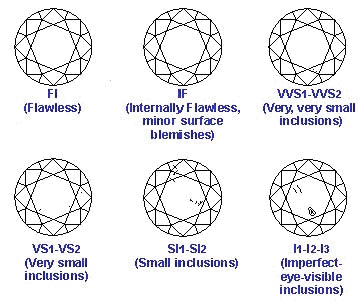
The table below is where you start to really get to know your diamond. its these features that go beyond the 4C's to start to see the real knowledge of a Diamond
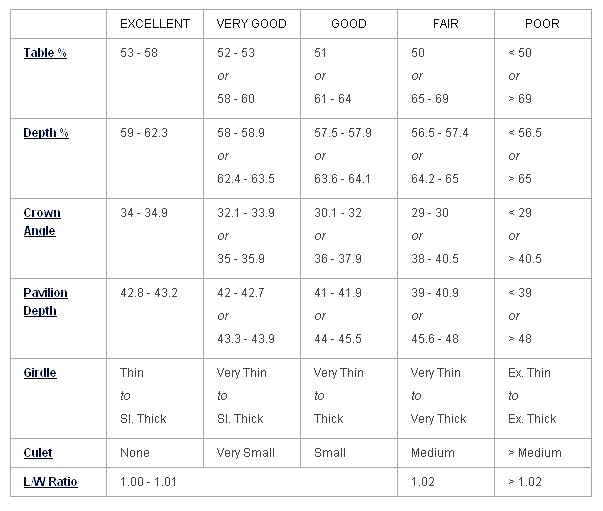
The Cut, in my view is the most important aspect of a stone.
Its the cut that gives the strongest indication that it will sparkle under low light conditions. like twlight or in the cinema.
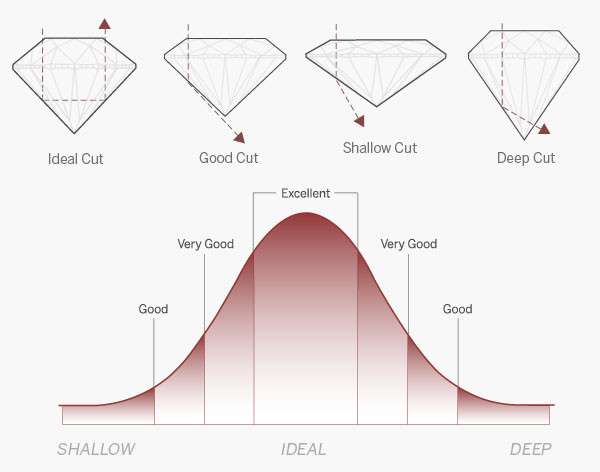
.jpg)
Further Facet terms
.jpg)






.jpg)
.jpg)

